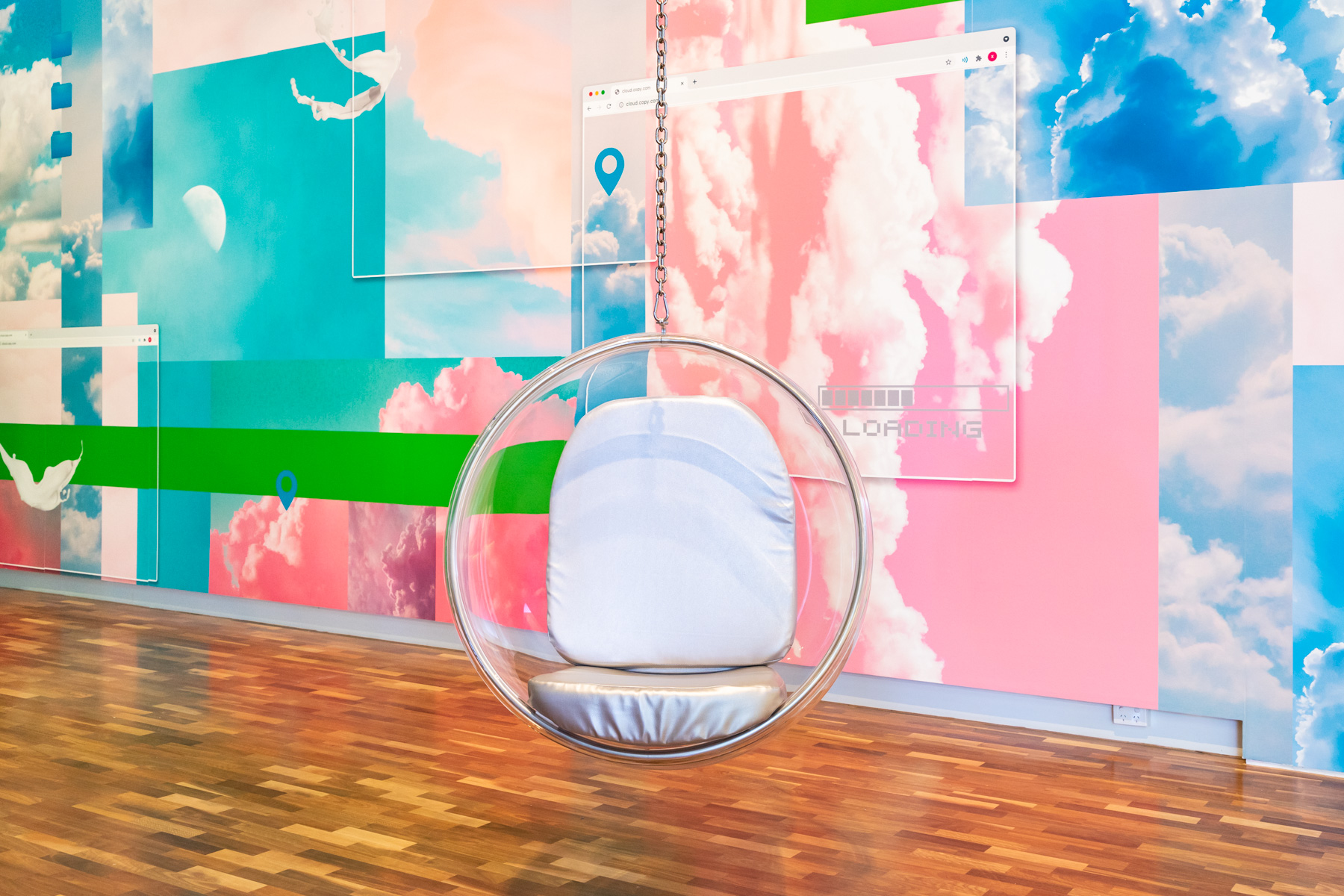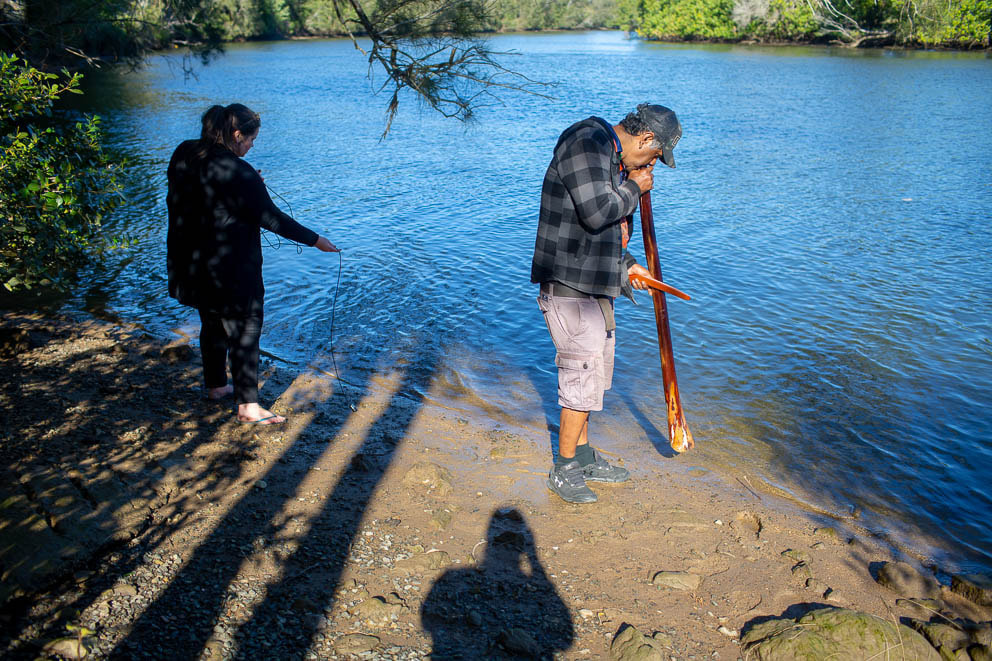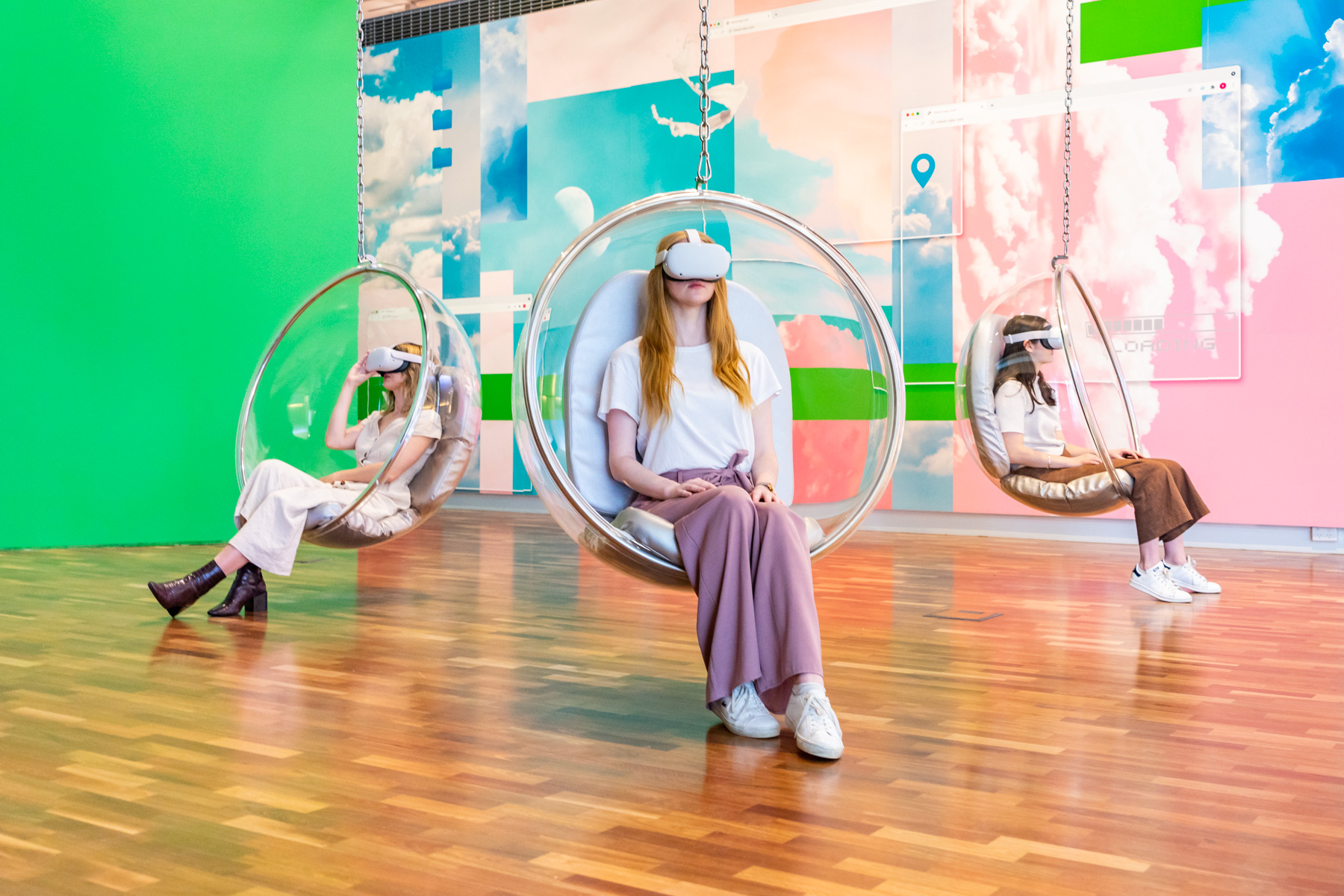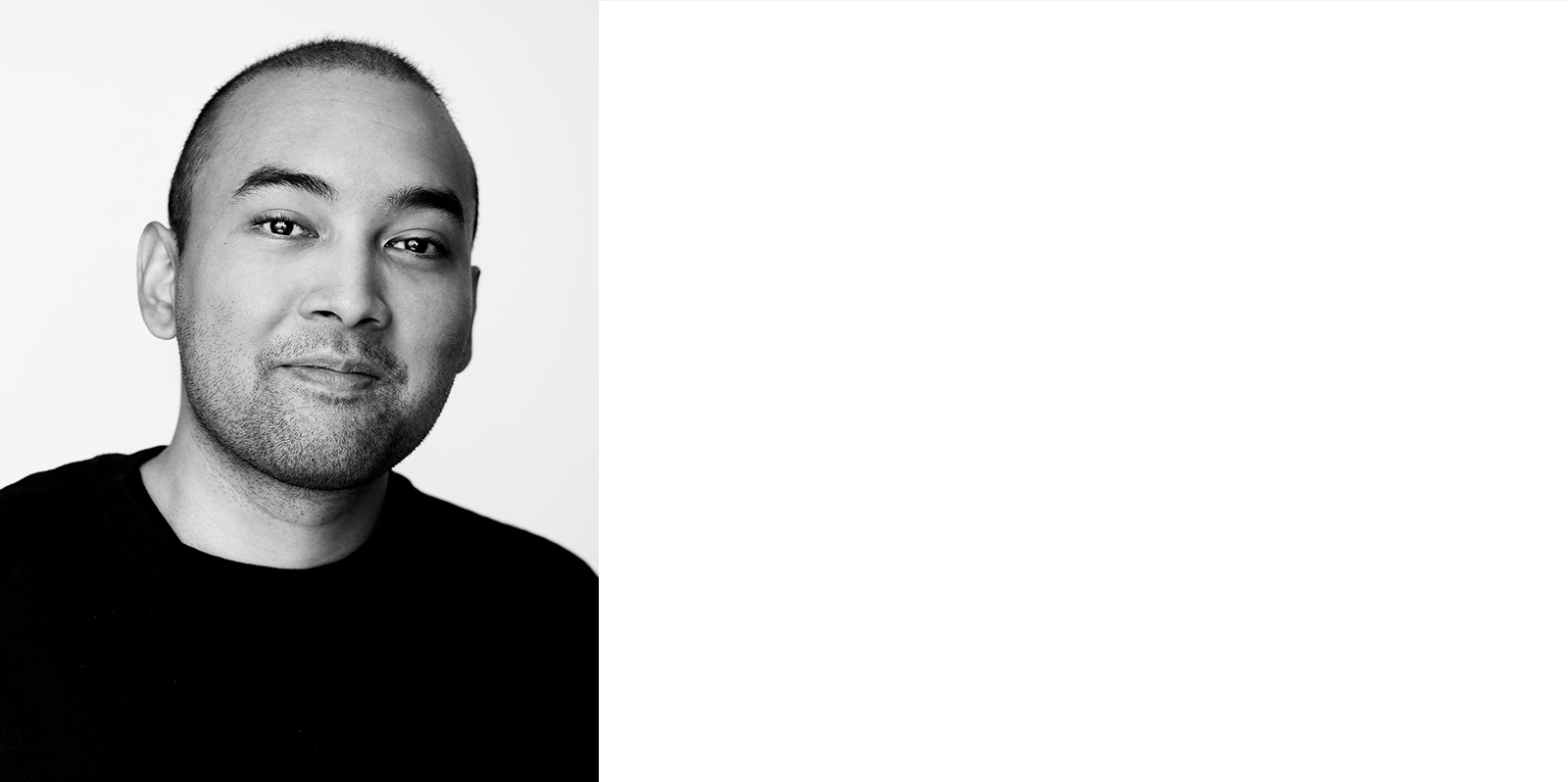Bodies, Listening and Ethics
Investing in critical arts-based enquiry, research and storytelling is crucial to the future of the arts. Our inaugural ANAT Emerging Writer Series launches with a series of five features by newly appointed ANAT Arts Administrator and emerging writer Aushaf Widisto. Surveying SPECTRAvision, Aushaf continues by introducing Episode 3: 36 Ideas to While Away the Winter.

Xanthe Dobbie, ‘Cloud Copy’ Install View (2021), ‘Don’t Be Evil’ Exhibition at UQ Art Museum, Photo by Louis Lim.
SPECTRAvision Episode 3: 36 Ideas to While Away the Winter
The third episode of SPECTRAvision was a day jam-packed with eye-opening insights and inquiries. This online symposium, titled 36 Ideas to While Away the Winter, gathered an eclectic group of artists, scientists, researchers, lawyers, and more to discuss the intersection of art, science, and technology. I found the conversations both cognitively demanding and enriching.
The symposium was divided into three segments: Bodies, Listening, and Ethics. I’ve picked one idea from each segment to while away my winter, and in this essay, I’ll take you through my reflections.
I. Bodies :: Paracosms and Parasocial Relationships
Ever since I can remember, I’ve always had imaginary friends.
In her work, Imaginary Friend World, Seychellois-Australian artist Danielle Freakley explored this phenomenon along with its myriad implications.
Everybody has their own imaginary friends. As the Ancient Greeks invented their pantheon of gods, we invent our own pantheon of who knows what. For some, it’s their revered ancestors or supernatural beings like djinns and fairies. For others, it could be as banal as idealised versions of their teenage crushes or celebrities they never met.
But why do we invent these imaginary friends? Some would say, to escape loneliness. When we crave connection but are unable to obtain it, we construct it in our minds.
Some kids in my generation, the so-called digital natives, have vloggers and live streamers as their imaginary friends. They’re addicted to the one-way, one-sided relationships that these online personalities provide. It doesn’t matter if they only exist within a computer screen and don’t even know who their viewers are. Imaginary relationships are spiritual connections, not physical ones.
But that’s not the kind of imaginary friends I have. My drug of choice isn’t parasocial relationships, but a paracosm–an imaginary world with its own pantheon of characters and cultures.

Nova Totius Terrarum Orbis Tabula (ca. 1670-1700) by Frederik de Wit. Public domain.
In this matter, I guess I’m influenced by people like J.R.R. Tolkien, who was regarded as a pioneer of high-fantasy literature. His fictional world of Middle-earth, which is the stage for The Hobbit and The Lord of the Rings, has received widespread acclaim for its incredibly detailed cosmos.
Many popular fantasy worlds were created for one sole purpose: To be the setting of a story. Middle-earth is fundamentally different. It’s a paracosm. It’s a world that Tolkien built just for the sake of it, over the span of his entire life. Frodo, Bilbo, Aragorn and Gandalf aren’t characters he wrote for a book–they’re his imaginary friends. The decision to eternalise them in books only comes later.
Granted, I don’t invent paracosms the size of Tolkien’s, but I follow the same principle. Imaginary friends, to me, aren’t conduits for parasocial relationships, but denizens of my paracosm.
In the end, it’s up to you. It’s your imagination. Your imaginary friends will adhere to whatever purpose you bestow upon them. A god to worship, a heartthrob to smother, or just a companion to keep you awake beside the campfire. Mine just happens to be an entire world.
What kind of imaginary friends do you have?
II. Listening :: Sounds as Sceneries, Vice Versa
Synesthesia means “union of the senses” in Greek. Put simply, it’s a phenomenon where a person’s senses criss-cross and blur together.
While stronger instances of synesthesia are relatively rare, I think most people experience some type of synesthesia to a lesser degree. Some synesthetes don’t even realise that their experiences are unusual until they found out other people didn’t have them. Others have kept them secret their entire lives.
I, for one, have a relatively common form of synesthesia called “grapheme-colour synesthesia,” where I perceive numbers and letters as having colours. For example, in my eyes, “3” and “A” are always blue, while “4” and “E” are always green–even when I’m looking at black type on white paper.

Listening in the Wild, 2020, Lyndon Davis, Dr Leah Barclay and Dr Tricia King
When I first saw Listening in the Wild, I immediately thought about synesthesia. Set in locations across the Sunshine Coast, this collaboration between Lyndon Davis, Tricia King, and Leah Barclay presents an evolving dialogue between photography, soundscapes, and Indigenous knowledge, to develop a new method for understanding ecosystems and responding to change. It investigates how we can remotely facilitate ecological empathy, cultural knowledge and connection to place.
During the COVID-19 lockdowns, technology gave us imperfect means to do this, such as social media and video meetings–but they’re merely a crutch. If another global disaster were to happen in the future, we’re gonna need better solutions. To fulfil our fundamental need for connection, both to people and to place, we need to learn how to replicate reality as closely as possible.
To me, works like Listening in the Wild are important steps toward that purpose. And perhaps, the key to using media art to replicate reality lies in synesthesia–in moving beyond compartmentalising singular senses and into bringing them together.
There are two types of synesthesia that might be relevant to Listening in the Wild:
- “chromesthesia,” where someone perceives sounds as colours; and
- “auditory-tactile synesthesia” where someone perceives sounds as bodily sensations.
You can sort of feel this when you immerse yourself in the audio tracks. If you close your eyes, you’ll feel as if the sounds are painting a scenery. You can feel each sound carrying its own colour and texture: flowing water, blowing wind, rustling leaves, chirping birds, screeching insects. If you’re a synesthete, the sensation might be even stronger. You might feel the water caressing your skin and the wind combing your hair. It’s as if you’re actually in the middle of it all.
Now, not everybody is a synesthete, and even those that are have varying degrees of sensitivity. But perhaps, one day, technology will come far enough to democratise and equalise synesthetic experiences for everybody. Imagine that: A future where everybody has the option to perceive sounds as sceneries, and vice versa.
I think it’s a strange but beautiful idea, don’t you?
III. Ethics :: The Prize and Price of Aesthetics
As a half-Javanese, there’s this one Javanese proverb I really like and has become somewhat of a creative north star for me. It goes: “Memayu hayuning bawana, ambrasta dur hangkara.” It means something like, “Beautifying the beauty of the world, eradicating its savagery.”
The message is simple but profound. As human beings, we have two jobs in this world: “improving what’s already there” and “erasing what’s there but shouldn’t be.” For a long time, I’ve held this philosophy close to my heart and applied it in my creative work. That is to say, whatever I bring into this world must add positive value to the world or subtract negative value from it.
I think that’s a good principle to have, for artists and creatives particularly. After all, in a world where so much is ugly, beauty is as sustaining as bread. But what’s the price of making the world beautiful?
The ethics of aesthetics is a somewhat elusive concept, especially once technology enters the fray and complicates things further.
In the last presentation of Episode 3, we have three practitioners from CAIDE’s Art, AI and Digital Ethics collective: Xanthe Dobbie, Sean Dockray, and Katrina Sluis; whose works explore the insights and contradictions that emerge when ethics and aesthetics meet with contemporary technologies.
Xanthe opened by presenting her work Cloud Copy, which explores the nature of virtual reality and cloud technologies. She imagined what the internal monologue of the cloud sounds like, and how online and offline lives bleed into each other–the overlap between “IRL and URL” as she calls it.

Xanthe Dobbie, Cloud Copy, 2021. 360 VR Installation, 4m,50s, Digitally Printed Wallpaper, Replica Eero Aarnio Hanging Bubble Chairs. This work was originally developed for Conflict in My Outlook: Don’t Be Evil at UQ Art Museum, curated by Anna Briers. Courtesy the artist. Photograph Louis Lim.
Afterwards, Sean cited his work Always Learning, which stages a conversation between an Amazon Echo, a Google Home Assistant, and an Apple Homepod. In their conversation, the three devices discuss the philosophical, moral and political implications of networked machine listening.
Katrina closed the session by sharing her practice as the Senior Curator at The Photographers’ Gallery London, which in 2011 established its Digital Programme to generate new knowledge and thinking about the role of the post-photographic image in contemporary art and society.
The unifying points tying these three works together are a critical approach toward technology and its practical application in work creation. At the end of the discussion, the moderator Dr Vanessa Bartlett asked whether ethically problematic technology can be used to create a new, better world. All three presenters agreed on essentially the same answer: New? Definitely. But better? Maybe not.
Technology is never free. Art is never free. Although we can’t always see it, there’s always a price to be paid. To build an architectural wonder, we must demolish what comes before. To fulfil our fashion demands, we must partake in a supply chain that’s highly polluting and involves modern-day slavery. To stream music and films online, we must utilise 24/7 always-on servers with significant energy and environmental costs. Not everyone would admit or even realise it, but behind the creative industries lies the destructive industries. Like every other coin, this one, too, has two sides.
Beautifying a beautiful world is a noble quest. But to attain that prize, what savageries do we have to eradicate? What price do we have to pay?
Ideas // Idle Hands
Blaise Pascal, the French mathematician, once wrote: “All of humanity’s problems stem from man’s inability to sit quietly in a room alone.” Humankind is terrible at doing nothing, because with idleness comes boredom, and there’s nothing more unbearable than boredom. There are no lengths we won’t go to alleviate that dreadful feeling. Hence the saying, “idle hands are the devil’s workshop.”
Always have ideas at hand to keep boredom at bay. To start with, I just gave you three: paracosm, synesthesia, and Javanese philosophy. I hope they sparked something in you.
In the bleak midwinter, I sat quietly in my room alone. I felt no boredom since I had thirty-six ideas to while it away. The devil never made his way to my idle hands.
ANAT would like to acknowledge our Curatorial Circle who walked alongside David Pledger: Alex Kelly, Nina Sellars, Tony Briggs, Robert Walton and Zena Cumpston, and our producing team, SPECTRAvision Producer, Dearna Newchurch, SPECTRAlive producer, Madeleine Collie, and producers Zamara Robison, Damienne Pradier (Typecast), Sophia Marinos and Robbie McEwan (The Things We Made Next).
ANAT SPECTRA 2022 was proudly presented by the Australian Network for Art and Technology (ANAT) in partnership with the Science Gallery Melbourne and Faculty of Fine Arts and Music, University of Melbourne and together with program partners The Things We Did Next (TTWDNext), Typecast Entertainment, RMIT University and Leonardo.

Aushaf Widisto, Emerging Writer and ANAT Arts Administrator
ANAT Arts Administrator Aushaf Widisto is an emerging writer and researcher from Indonesia. His writing has been featured in numerous publications across the web, both under his real name and pen name Adam Erland. After joining ANAT on an internship program, Aushaf begins his new part-time role as ANAT’s Arts Administrator in July 2022.
Having received a Bachelor of Urban & Regional Planning from Institut Teknologi Bandung and a Master of Cultural & Creative Industries from Monash University, Aushaf’s goal is to leverage arts and culture to create better cities and communities. Outside ANAT, he also works as a Research & Communications Assistant at Creative Economy. Previously, Aushaf worked with Asialink Arts.